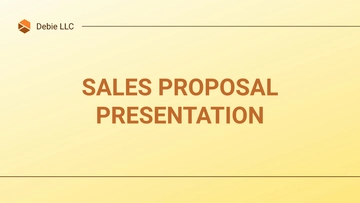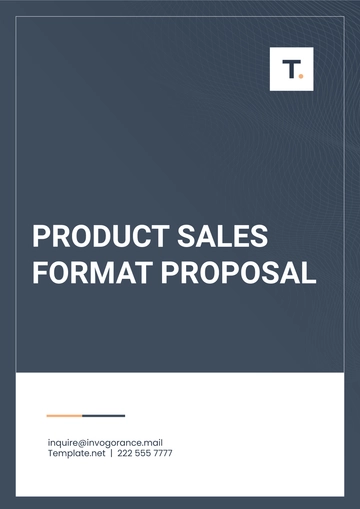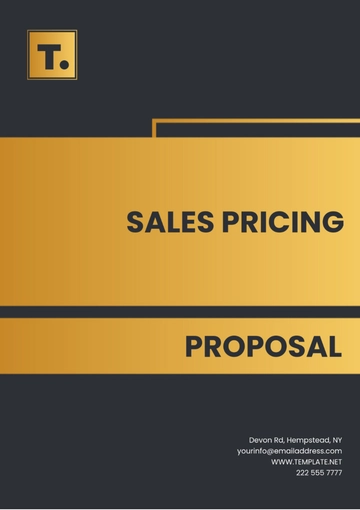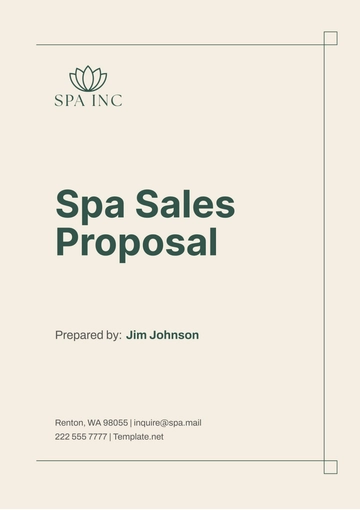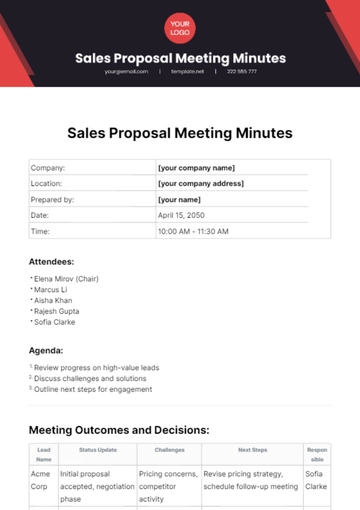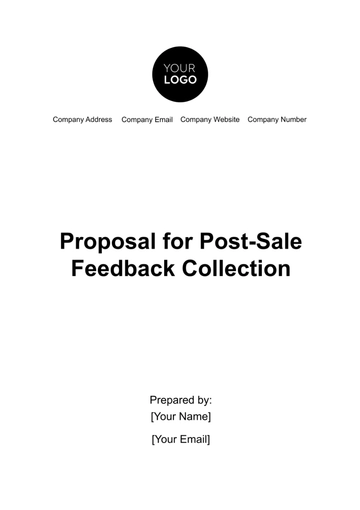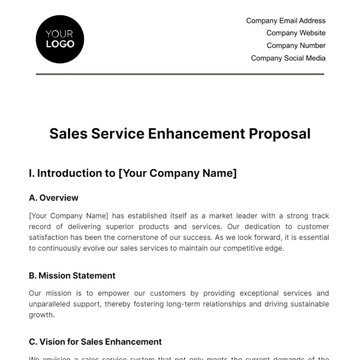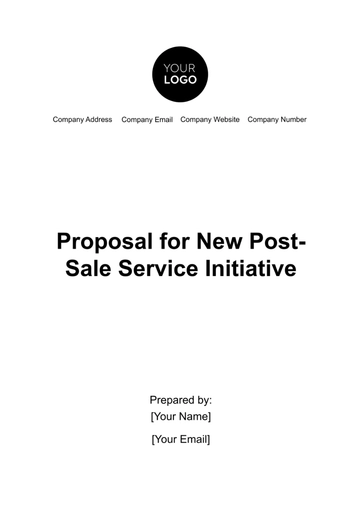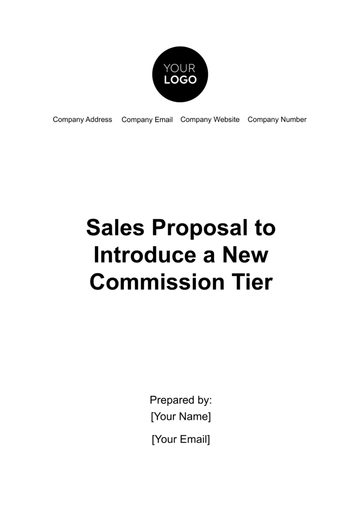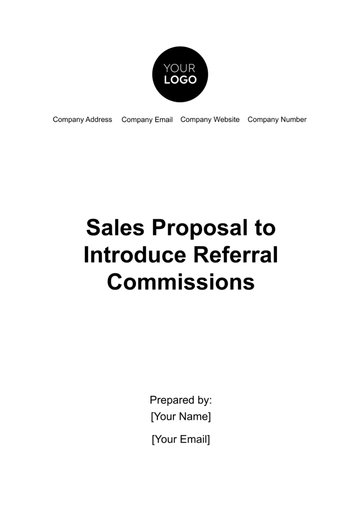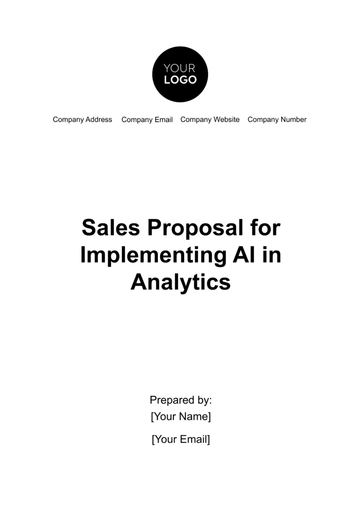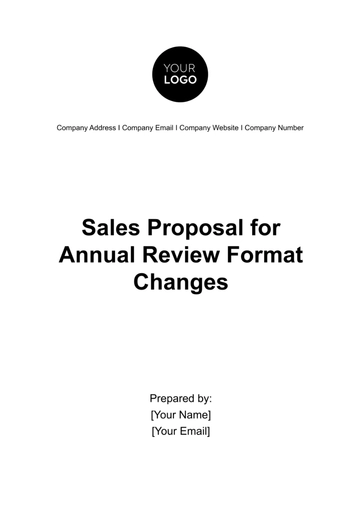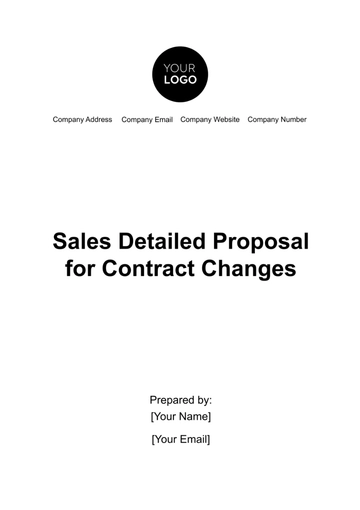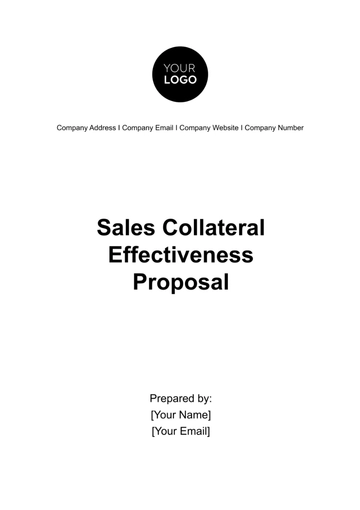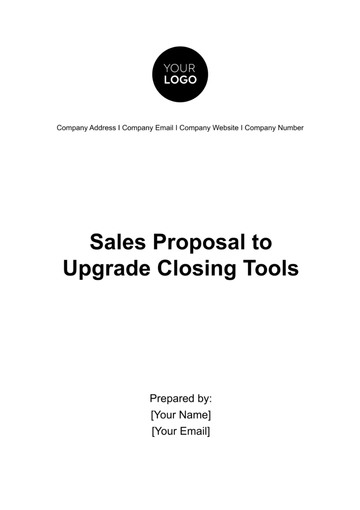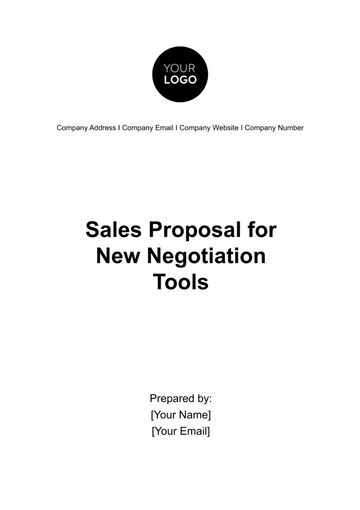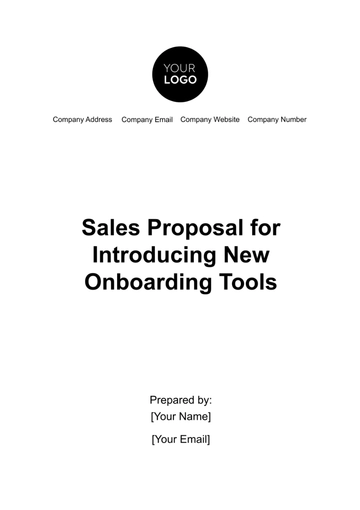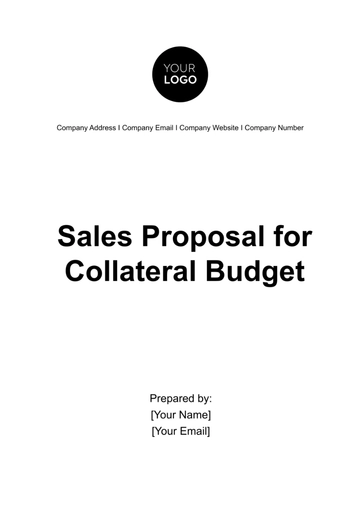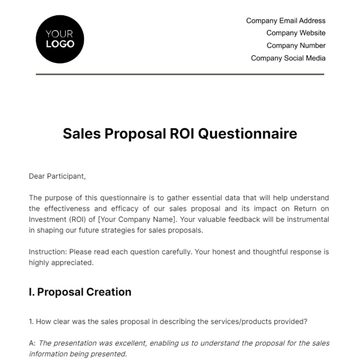Free Sales Proposal for Annual Review Format Changes
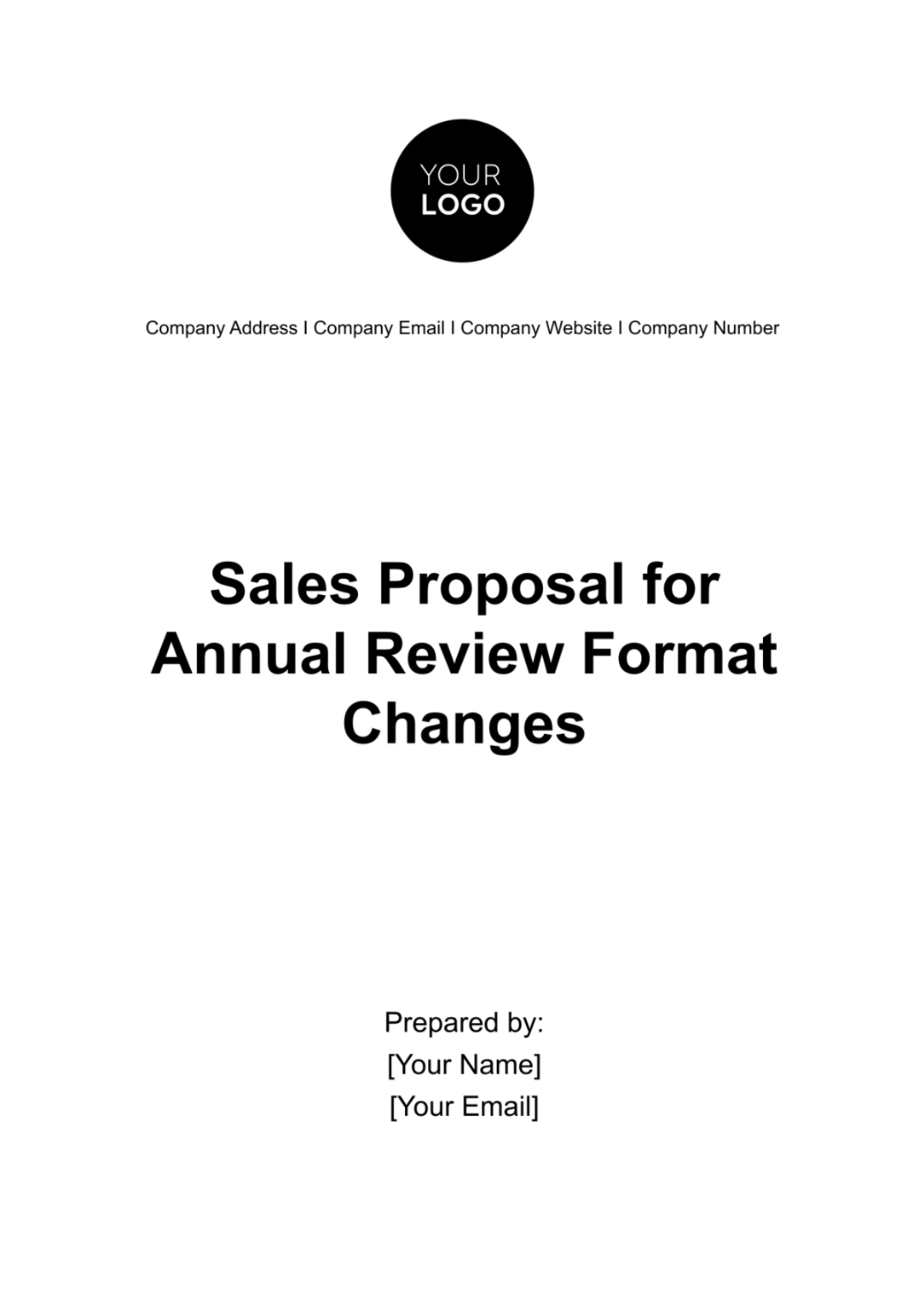
I. Introduction
A. Background
Our organization has evolved significantly since the current annual review format was first implemented. We have expanded our product offerings, diversified our client base, and embraced cutting-edge technologies. As a result, the expectations and demands placed on our employees have evolved as well.
The existing format, which primarily comprises a written report and a brief meeting between employees and their supervisors, was designed with simplicity in mind. However, its simplicity has become a limitation. Our employees are seeking more comprehensive feedback that goes beyond surface-level observations. They want a deeper understanding of their performance, a clearer path for career development, and a stronger connection with their supervisors.
B. Purpose of the Proposal
The primary purpose of this proposal is to address the critical need for a significant overhaul of our current annual review format. We acknowledge that our employees are the backbone of our organization, and their growth and development are intricately tied to our success. Therefore, we are committed to enhancing the annual review process to better serve our employees and the organization as a whole.
C. Scope of the Proposal
The scope of this proposal is all-encompassing, covering every facet of the annual review format changes. It provides a comprehensive plan for implementation, addresses potential challenges, and outlines the benefits we anticipate. Beyond this, it also takes into account the broader implications of these changes on our internal and external stakeholders.
II. Current Annual Review Format
A. Overview
To gain a deeper understanding of the current annual review format, let's delve into the specifics. At present, our annual review process is conducted through a combination of written reports and one-on-one meetings between employees and their immediate supervisors.
The written reports serve as a summary of an employee's performance over the past year. They typically include a brief description of accomplishments, areas of improvement, and a list of goals for the upcoming year. These documents are submitted by employees to their supervisors, who then review them before the annual meeting.
B. Analysis of Current Format
To understand the motivation for change, it's crucial to analyze the current format critically. While the existing process has served us reasonably well in the past, it has several notable limitations that hinder its effectiveness.
Lack of Detail: One of the most glaring issues is the lack of detail in the performance assessment provided in the written reports. Employees receive only a surface-level overview of their performance, which leaves them with limited insights into their strengths and areas needing improvement.
Limited Interaction: The annual meeting, intended for clarification and goal-setting, is often limited in duration and scope. This brevity can lead to insufficient interaction between employees and supervisors, hindering comprehensive feedback and development discussions.
Inefficiencies: Furthermore, the current format lacks a streamlined process for goal-setting and tracking. Goals are set during the annual meeting and often revisited only once a year, resulting in suboptimal goal achievement and missed opportunities for real-time adjustments.
These limitations collectively underscore the need for a more robust, engaging, and effective annual review format that aligns with the aspirations and expectations of our employees and the broader goals of our organization. The proposed changes, as detailed in subsequent sections, address these shortcomings head-on, offering a comprehensive solution for a more productive annual review process.
III. Proposed Changes
A. New Format Overview
The proposed changes represent a significant shift in our annual review process, aimed at addressing the limitations of the current format and ushering in a more effective, engaging, and results-oriented approach. Here's a comprehensive overview of the new format:
Performance Assessment Enhancement: In the new format, we will significantly enhance the performance assessment component. Instead of vague, high-level descriptions, employees will receive detailed feedback on their accomplishments, areas for improvement, and specific examples of their contributions. This comprehensive assessment will provide employees with a clear and nuanced understanding of their performance, enabling them to make more informed decisions about their professional development.
Regular Feedback Sessions: The cornerstone of the new format is regular feedback sessions. Instead of an annual one-time meeting, employees and supervisors will engage in ongoing feedback discussions throughout the year. These sessions will be structured to encourage open communication, where employees can voice concerns, seek guidance, and discuss their progress. This continuous feedback loop will foster a culture of improvement and collaboration.
Streamlined Goal-Setting and Tracking: Goals will no longer be set once a year and forgotten until the next annual review. In the new format, goal-setting and tracking will be streamlined. Employees will collaboratively set SMART (Specific, Measurable, Achievable, Relevant, and Time-bound) goals with their supervisors. These goals will be regularly reviewed and adjusted as needed. This iterative approach ensures that employees stay aligned with organizational objectives and make progress toward their personal and professional goals throughout the year.
Leveraging Technology: To facilitate these changes, we will leverage technology. We will implement a user-friendly digital platform that centralizes all aspects of the annual review process, from submitting achievements and feedback to tracking goal progress. This technology will enhance the transparency and accessibility of the process, making it easier for employees and supervisors to stay engaged and informed.
B. Benefits of Proposed Changes
The proposed changes offer a multitude of benefits to both our employees and the organization as a whole:
Empowered Employees: By providing detailed performance assessments and regular feedback, we empower our employees to take ownership of their growth and development. They will have a clearer picture of their strengths and areas for improvement, enabling them to set meaningful goals and work on continuous improvement.
Enhanced Communication: The shift towards regular feedback sessions will break down communication barriers. Employees will feel more comfortable sharing their thoughts and concerns, fostering a culture of open communication. Supervisors will have a better understanding of employee needs and can provide tailored support.
Improved Goal Achievement: With goals no longer relegated to once-a-year discussions, employees will be more engaged in achieving them. Regular goal tracking and adjustments ensure that objectives remain relevant and attainable, ultimately leading to higher goal achievement rates.
Data-Driven Decision-Making: The digital platform's data capabilities will enable us to gather valuable insights into employee performance trends and development needs. This data can inform strategic decisions about training, resource allocation, and talent development.
Higher Employee Satisfaction: As employees experience a more supportive and engaging annual review process, their overall job satisfaction is likely to increase. This, in turn, can lead to higher retention rates and a more motivated workforce.
IV. Implementation Plan
A. Timeline
The successful implementation of these changes necessitates a well-structured timeline. While specific dates will be outlined in the full proposal, here is a high-level overview:
Task | Timeline |
Needs Assessment | 2 weeks |
New Format Design | 3 weeks |
Employee Training | 1 week |
Pilot Testing | 1 week |
Full Implementation | 4 weeks |
B. Resources Required
The successful implementation of these changes will require a combination of human resources, technology, and time:
Human Resources
Personnel | Number | Responsibilities |
HR Personnel | 5 | Needs assessment, training, and ongoing support. |
Supervisors | - | Actively participate in feedback sessions and goal-setting. |
IT and Design Teams | 15 | Developing the digital platform and providing technical support. |
Technology: The development and implementation of the digital platform will be a significant investment. It will serve as the central hub for the new annual review process, making it user-friendly and efficient.
Time: The entire implementation process is expected to take 2 months, with careful consideration given to each phase's duration to ensure a smooth transition.
V. Risk Analysis
A thorough risk analysis will be conducted as part of the full proposal, outlining potential challenges and mitigation strategies. These risks may include resistance to change, technical difficulties during platform development, and ensuring consistent participation in feedback sessions.
VI. Cost-Benefit Analysis
Item | Cost/Revenue Projection |
Digital Platform Development | $250,000 |
Employee Training | $100,000 |
IT Support | $20,000 per year |
Communication Materials | $30,000 |
Employee Time | $50,000 |
Total Estimated Cost | $450,000 |
Improved Performance | $500,000 |
Higher Employee Satisfaction | $300,000 |
Talent Retention | $200,000 |
Data-Driven Decision-Making | $150,000 |
Total Revenue/Savings | $1,150,000 |
Return on Investment (ROI) | Approximately 155.56% |
VII. Stakeholder Involvement
A. Internal Stakeholders
Engaging internal stakeholders is essential for the successful implementation of the proposed changes:
Employees: Employees will actively participate in the new annual review process. Their input and feedback on the process will be sought throughout the implementation.
Supervisors: Supervisors will receive training to effectively navigate the new process and provide valuable insights to HR and leadership.
HR Department: HR personnel will lead the implementation effort, conduct the needs assessment, develop training materials, and provide ongoing support. They will also collect feedback and continuously improve the process.
IT and Design Teams: IT professionals and designers will collaborate closely with HR to develop the digital platform, ensure its functionality, and address any technical issues that may arise.
B. External Stakeholders
While the primary focus is internal, it's important to consider any potential impact on external stakeholders:
Customers (if applicable): Improved employee performance may lead to enhanced customer service or product quality, potentially resulting in increased customer satisfaction and sales.
Suppliers (if applicable): Improved supply chain management due to enhanced employee performance may benefit our relationships with suppliers and possibly lead to cost savings.
VIII. Conclusion
In summary, the proposed changes to our annual review format represent a significant transformation that will empower our employees, enhance communication, and drive goal achievement. This comprehensive proposal has outlined the need for change, the benefits, and the financial implications.
The new annual review format will enable us to provide employees with detailed performance assessments, foster regular feedback sessions, and streamline goal-setting and tracking. These changes align with our commitment to continuous improvement and investment in our people.
We wholeheartedly recommend the adoption of the new annual review format as outlined in this proposal. The anticipated return on investment, the potential for increased revenue, and the positive impact on employee satisfaction make it a strategic move for our organization.
By embracing these changes, we are not only investing in our employees' growth but also positioning our organization for greater success in the years to come. We look forward to your support and collaboration as we embark on this transformative journey together.
- 100% Customizable, free editor
- Access 1 Million+ Templates, photo’s & graphics
- Download or share as a template
- Click and replace photos, graphics, text, backgrounds
- Resize, crop, AI write & more
- Access advanced editor
Transform your annual review process with the Sales Proposal for Annual Review Format Changes Template from Template.net. This editable and customizable template is your key to proposing and implementing effective review format changes. Easily adjust it using our AI Editor tool, ensuring your proposal perfectly suits your organization's needs for enhanced performance evaluations.
You may also like
- Business Proposal
- Research Proposal
- Proposal Request
- Project Proposal
- Grant Proposal
- Photography Proposal
- Job Proposal
- Budget Proposal
- Marketing Proposal
- Branding Proposal
- Advertising Proposal
- Sales Proposal
- Startup Proposal
- Event Proposal
- Creative Proposal
- Restaurant Proposal
- Blank Proposal
- One Page Proposal
- Proposal Report
- IT Proposal
- Non Profit Proposal
- Training Proposal
- Construction Proposal
- School Proposal
- Cleaning Proposal
- Contract Proposal
- HR Proposal
- Travel Agency Proposal
- Small Business Proposal
- Investment Proposal
- Bid Proposal
- Retail Business Proposal
- Sponsorship Proposal
- Academic Proposal
- Partnership Proposal
- Work Proposal
- Agency Proposal
- University Proposal
- Accounting Proposal
- Real Estate Proposal
- Hotel Proposal
- Product Proposal
- Advertising Agency Proposal
- Development Proposal
- Loan Proposal
- Website Proposal
- Nursing Home Proposal
- Financial Proposal
- Salon Proposal
- Freelancer Proposal
- Funding Proposal
- Work from Home Proposal
- Company Proposal
- Consulting Proposal
- Educational Proposal
- Construction Bid Proposal
- Interior Design Proposal
- New Product Proposal
- Sports Proposal
- Corporate Proposal
- Food Proposal
- Property Proposal
- Maintenance Proposal
- Purchase Proposal
- Rental Proposal
- Recruitment Proposal
- Social Media Proposal
- Travel Proposal
- Trip Proposal
- Software Proposal
- Conference Proposal
- Graphic Design Proposal
- Law Firm Proposal
- Medical Proposal
- Music Proposal
- Pricing Proposal
- SEO Proposal
- Strategy Proposal
- Technical Proposal
- Coaching Proposal
- Ecommerce Proposal
- Fundraising Proposal
- Landscaping Proposal
- Charity Proposal
- Contractor Proposal
- Exhibition Proposal
- Art Proposal
- Mobile Proposal
- Equipment Proposal
- Student Proposal
- Engineering Proposal
- Business Proposal

